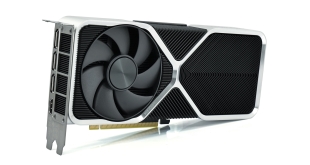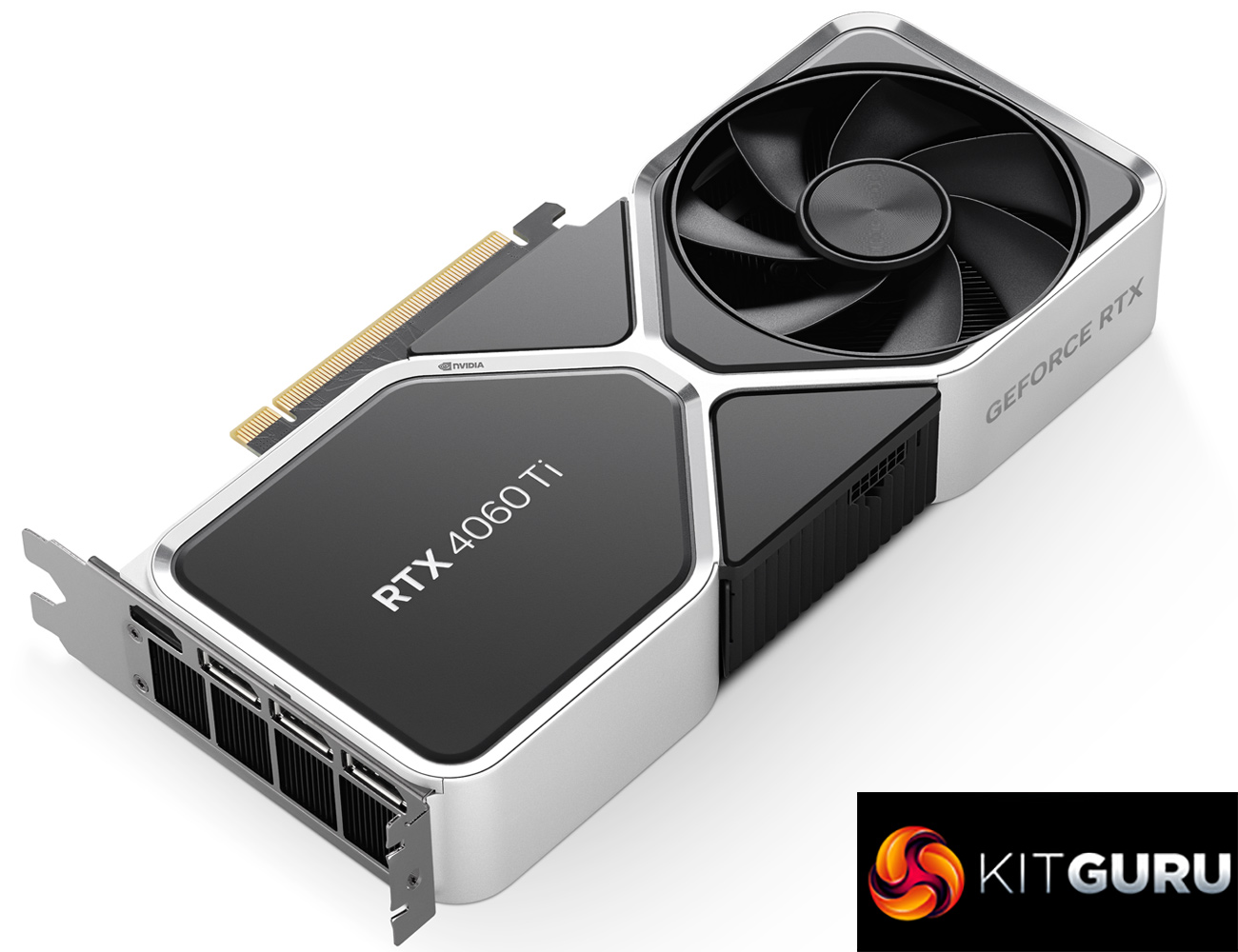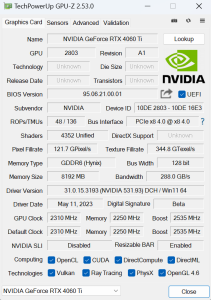
Following on from the release of the RTX 4070 last month, Nvidia has since announced three new SKUs in the 4060 family, and today we are putting the RTX 4060 Ti 8GB through its paces. Built on AD106 silicon, this new GPU promises extraordinary efficiency, but question marks loom over the 8GB frame buffer. A 16GB model is coming in July, but for now, what can the £389 RTX 4060 Ti 8GB bring to the party?
Coming in as a direct replacement for the venerable RTX 3060 Ti, Nvidia's RTX 4060 Ti is hitting the market at £389, with a 16GB model arriving in July with a £90 price premium over the 8GB model we are reviewing here.
Marking the first appearance of AD106 silicon in the desktop space, Nvidia is positioning this card as a ‘1080p performance champ'. Let's find out if it can deliver on that promise. If you want to read this review as a single page, click HERE.
| RTX 4090 | RTX 4080 | RTX 4070 Ti | RTX 4070 | RTX 4060 Ti | RTX 3060 Ti | |
| Process | TSMC N4 | TSMC N4 | TSMC N4 | TSMC N4 | TSMC N4 | Samsung 8N |
| SMs | 128 | 76 | 60 | 46 | 34 | 38 |
| CUDA Cores | 16384 | 9728 | 7680 | 5888 | 4352 | 4864 |
| Tensor Cores | 512 | 304 | 240 | 184 | 136 | 152 |
| RT Cores | 128 | 76 | 60 | 46 | 34 | 38 |
| Texture Units | 512 | 304 | 240 | 184 | 136 | 152 |
| ROPs | 176 | 112 | 80 | 64 | 48 | 80 |
| GPU Boost Clock | 2520 MHz | 2505 MHz | 2610 MHz | 2475 MHz | 2535 MHz | 1665 MHz |
| Memory Data Rate | 21 Gbps | 22.4 Gbps | 21 Gbps | 21 Gbps | 18 Gbps | 14 Gbps |
| L2 Cache | 73729 KB | 65536 KB | 49152 KB | 36864 KB | 32768 KB | 4096 KB |
| Total Video Memory | 24GB GDDR6X | 16GB GDDR6X | 12GB GDDR6X | 12GB GDDR6X | 8GB GDDR6 | 8GB GDDR6 |
| Memory Interface | 384-bit | 256-bit | 192-bit | 192-bit | 128-bit | 256-bit |
| Memory Bandwidth | 1008 GB/Sec | 716.8 GB/Sec | 504 GB/Sec | 504 GB/Sec | 288 GB/Sec | 448 GB/Sec |
| TGP | 450W | 320W | 285W | 200W | 160W | 200W |
First, for a quick spec recap. The RTX 4060 Ti marks the first appearance of the AD106 silicon in the desktop space, a tiny die measuring just 190mm2. The fundamental building blocks are still the same of course, with the RTX 4060 Ti offering a total of 34 Streaming Multiprocessors (SMs), each housing 256 CUDA Cores, for a total of 4352. We also find 34 RT cores, 136 Tensor cores, 136 Texture Units, and 48 ROPs.
TSMC's N4 node has Nvidia cranking up the clock speed significantly this generation, with the RTX 4060 Ti sporting a 2535MHz rated boost clock. That's the highest clock speed on a desktop Ada GPU so far, and we would expect GPU Boost to push things further still.
The memory configuration is another area where AD106 has been cut-back significantly. The memory interface has been reduced to 128-bit, and even with 8GB GDDR6 running at 18Gbps, that brings total memory bandwidth down to 288 GB/s, lower than even the RTX 3060. That said, there has been a substantial upgrade to the L2 cache with the Ada architecture, with the RTX 4060 Ti now offering 32MB, compared to just 4MB for GA104.
It's also worth noting that the PCIe bus has also been reduced, with the 4060 Ti offering a Gen4 x8 interface, as opposed to Gen4 x16 connectors on the rest of the 40-series.
Considering these cut-backs, power draw is naturally lower than the RTX 4070, with the 4060 Ti boasting a 160W TGP. This is something we focus on closely, using our updated GPU power testing methodology in this review, so read on for our most detailed power and efficiency testing yet.
 KitGuru KitGuru.net – Tech News | Hardware News | Hardware Reviews | IOS | Mobile | Gaming | Graphics Cards
KitGuru KitGuru.net – Tech News | Hardware News | Hardware Reviews | IOS | Mobile | Gaming | Graphics Cards




